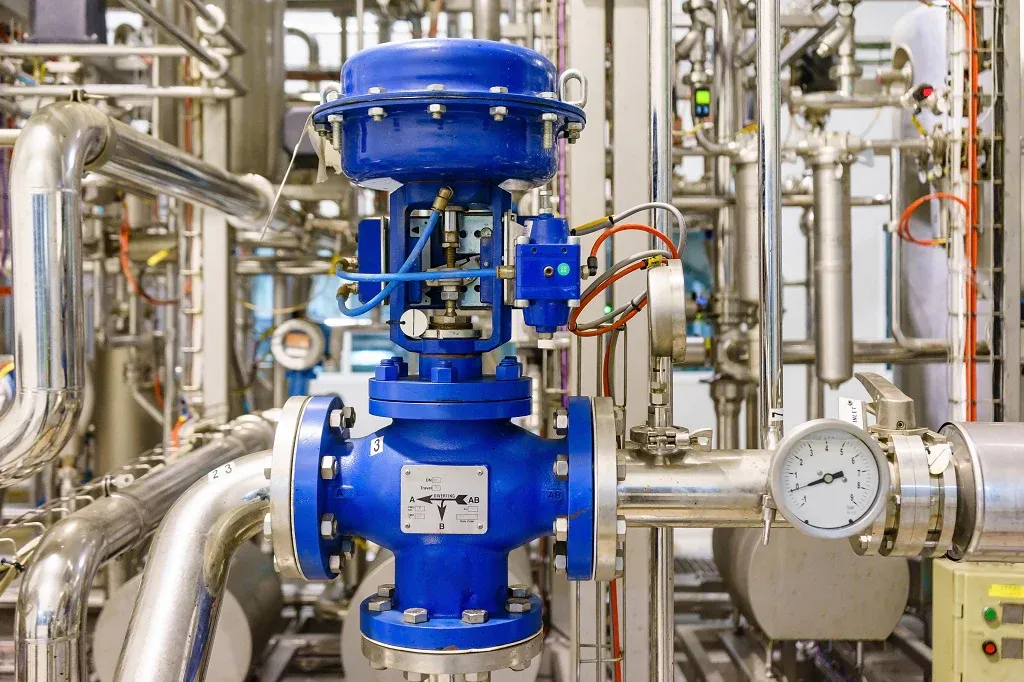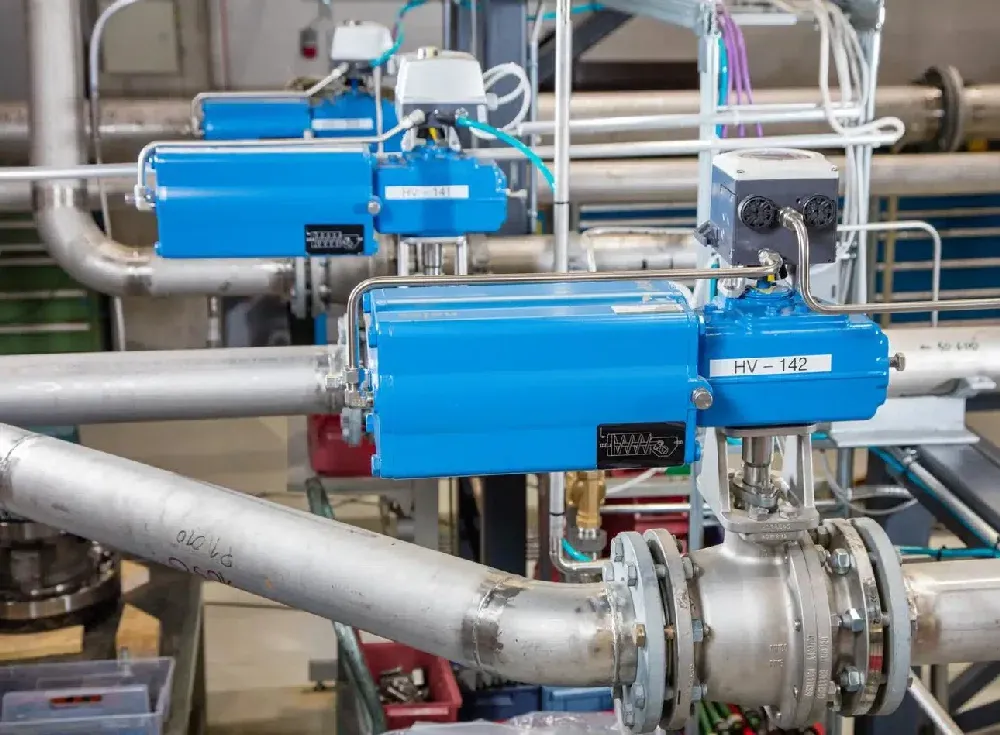
When it comes to sizing and selecting control valves, much of the attention typically falls on the flow coefficient (Cv)—the measurement that represents a valve's capacity to pass fluid under specific conditions. Cv is essential for determining how well a valve can handle design flow rates at the desired pressure drop, but this metric alone does not tell the full story of a valve’s performance. To truly understand a valve’s capability for flow control, particularly under varying load conditions, one must also consider another critical parameter: rangeability.
While often mentioned alongside or even confused with the term turndown ratio, rangeability is a distinct concept with significant implications for control valve performance. Engineers and process designers must understand both terms to ensure accurate and reliable control across all operating conditions. This article explores what rangeability means, how it differs from turndown ratio, and why it is an essential characteristic when evaluating control valves for precision flow management.
Rangeability is defined as the ratio of a valve's maximum controllable flow to its minimum controllable flow under laboratory conditions. This ratio helps define the operational limits within which the valve can modulate flow accurately and repeatably. It is a characteristic inherent to the valve design, measured in a controlled testing environment without the influence of real-world factors like process variability, wear, or installation issues.
Let’s consider a globe valve as an illustrative example. This common control valve uses a stem with a contoured plug and a disc that moves against a seat to control fluid flow. The plug is slightly smaller in diameter than the seat, creating a fixed clearance even when the valve is nearly closed. This small opening constitutes the minimum controllable flow—the smallest amount of flow that the valve can accurately control before it effectively shuts off.
The maximum controllable flow, on the other hand, is the largest flow the valve can handle before it reaches full open position or becomes unstable. The rangeability is therefore a fixed property of the valve design and manufacturing tolerances.
For example, if a valve has a rangeability of 100:1, it means the valve can reliably control flows from its maximum down to 1/100th of that maximum. Below this threshold, accurate control becomes unreliable, and the valve may become unresponsive or unstable.

While rangeability is often used interchangeably with turndown ratio, the two terms refer to different—but related—concepts.
Definition: Ratio of maximum controllable flow to minimum controllable flow based on laboratory testing.
Scope: Inherent to the valve design, independent of the system where the valve will be used.
Use: Useful during the valve selection process to ensure it meets the precision needs of the process.
Definition: Ratio of the maximum system flow rate during normal operation to the minimum controllable flow within the installed system.
Scope: Depends on actual process conditions, instrumentation, and installation environment.
Use: Determines how well the valve performs within the operating range of the specific application.
To illustrate, consider a boiler system. The turndown ratio for a boiler might refer to the ratio of its maximum heat output to the minimum stable heat output it can maintain. For instance, a 10:1 turndown ratio means the boiler can reduce its heat output to 10% of its full capacity while still maintaining effective combustion and system stability.
In control valves, turndown is impacted by many real-world variables: process noise, valve wear, actuator limitations, control loop tuning, and more. A valve with a theoretical rangeability of 100:1 might only deliver a turndown ratio of 30:1 in a noisy or dynamic process environment.
Understanding a valve’s rangeability is crucial when selecting a control valve for modulating service—where the valve needs to operate at varying degrees of opening rather than just fully open or closed. Here’s why it matters:
Processes often require precise control at low flow rates, particularly during startup, shutdown, or low-load periods. A valve with insufficient rangeability may lose responsiveness at these flows, leading to poor process control or even instability.
A valve that offers high rangeability can smoothly control flow across a wide range of demands without abrupt transitions. This reduces oscillations and improves product quality, energy efficiency, and equipment longevity.
High rangeability allows systems to operate efficiently across broader load conditions, accommodating future changes in process requirements without requiring valve replacement.
Different valve types offer different levels of rangeability based on their geometry and control characteristics:
|
Valve Type |
Typical Rangeability |
|
Globe Valve |
100:1 to 200:1 |
|
Rotary Ball Valve |
100:1 to 300:1 |
|
Butterfly Valve |
30:1 to 100:1 |
|
Eccentric Plug Valve |
50:1 to 150:1 |
|
Diaphragm Valve |
10:1 to 20:1 |
Globe valves are typically known for offering the best rangeability due to their linear flow characteristics and precise plug control. Rotary control valves, like segmented ball or high-performance butterfly valves, are increasingly engineered to provide competitive rangeability along with compact design advantages.
Even with a valve designed for high rangeability, its real-world performance may fall short of theoretical specifications. Several factors contribute to this gap:
The control valve's actuator must have fine resolution and minimal hysteresis to position the valve accurately at very small openings. Poor actuator performance can limit control accuracy at low flow conditions.
Oversized valves may operate too close to the closed position most of the time, reducing effective rangeability. Proper valve sizing ensures that the valve operates in its optimal control range, usually between 20% and 80% open.
Fluctuations in upstream or downstream conditions—pressure, temperature, or flow—can interfere with the valve’s ability to maintain stable control at low flows.
Smart valve positioners and well-tuned control loops can significantly improve a valve’s practical rangeability by enhancing its responsiveness and accuracy.
To ensure that your control valve operates with the desired rangeability in practice, follow these key guidelines:
Size the valve properly for its application. Avoid oversizing, which leads to poor low-flow control.
Select the right valve type based on the process and required rangeability.
Use smart positioners and digital control systems to improve control accuracy, especially at low openings.
Minimize dead time and hysteresis in the control loop through high-quality actuators and loop tuning.
Ensure proper installation and maintenance to avoid wear and build-up that can limit rangeability over time.
Modern process industries rely heavily on advanced automation, digital controllers, and predictive maintenance to ensure efficiency and precision. As such, rangeability is increasingly seen not just as a theoretical spec, but as a performance metric that influences the overall process control architecture.
For example, in batch processing, where flow rates vary significantly throughout a cycle, valves with higher rangeability reduce the need for bypasses or multiple valve stages. In continuous processes, such as chemical manufacturing or water treatment, high rangeability supports better response to variable loads, improving overall process stability and product consistency.
While Cv remains a critical parameter in control valve sizing, rangeability is just as important for applications requiring precise modulation across a wide range of operating conditions. Engineers must understand both rangeability and turndown ratio to make informed decisions about valve selection and ensure performance matches process needs.
By choosing valves with appropriate rangeability—and optimizing installation, actuation, and control systems—plant operators can achieve stable, responsive, and efficient flow control across the entire spectrum of demand.
Whether you are managing steam flow in a power plant, fine dosing in a chemical reactor, or flow regulation in an HVAC system, understanding and applying the concept of rangeability is essential for successful control valve application.